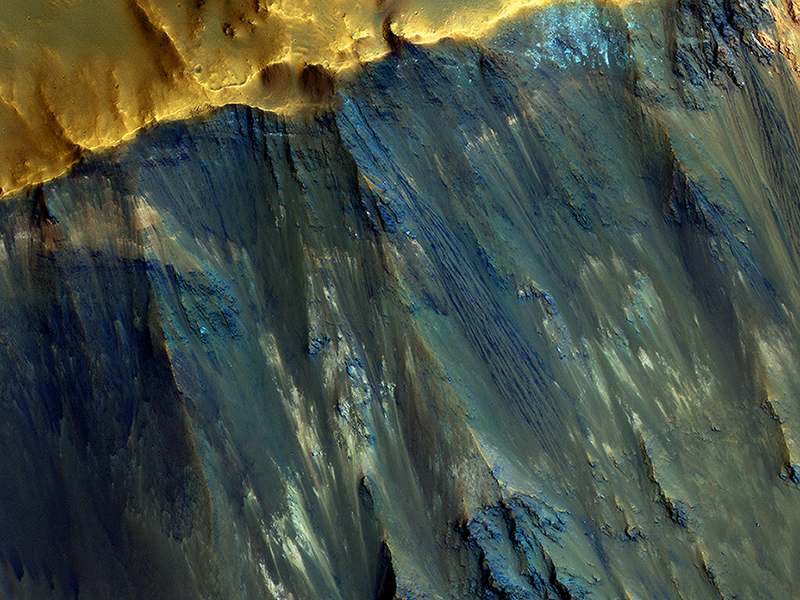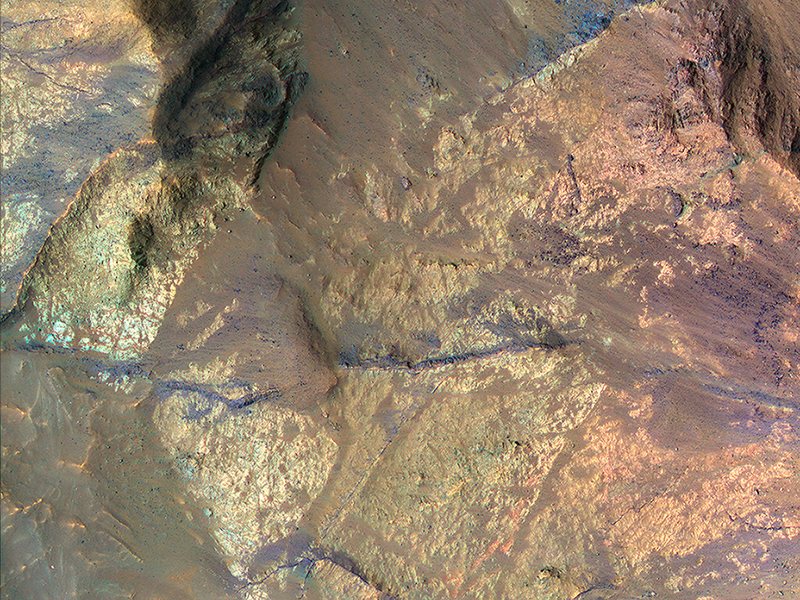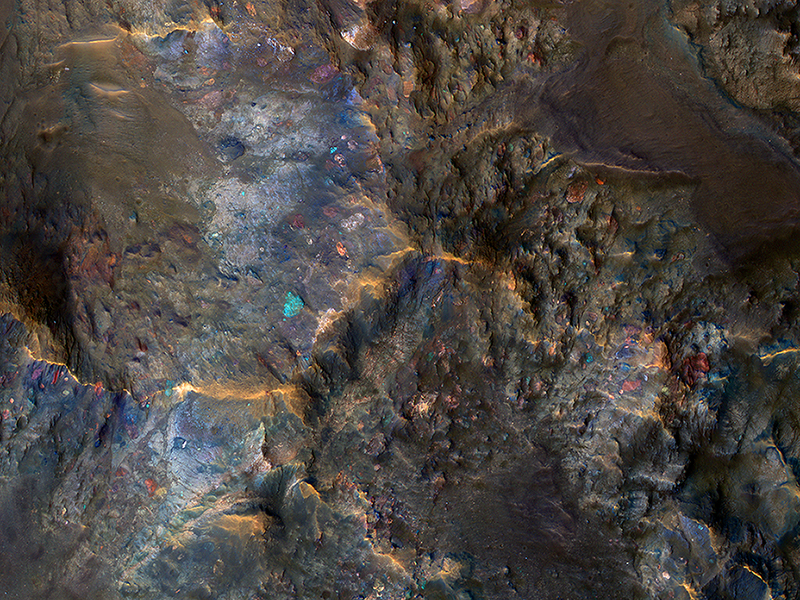HiRISE Updates Week of 2017 Jan 02
Posted: Thu Jan 05, 2017 8:30 pm
Alfred McEwen wrote:Hues in a Crater Slope (ESP_021520_1550)
Impact craters expose the subsurface materials on steep slopes. However, these slopes often experience rockfalls and debris avalanches that keep the surface clean of dust, revealing a variety of hues, like in this enhanced-color image, representing different rock types. The bright reddish material at the top of the crater rim is from a coating of the Martian dust.
The long streamers of material are from downslope movements. Also revealed in this slope are a variety of bedrock textures, with a mix of layered and jumbled deposits. This sample is typical of the Martian highlands, with lava flows and water-lain materials depositing layers, then broken up and jumbled by many impact events.
(Note: North is approximately down in the cutout and above image).
This is a stereo pair with ESP_021454_1550.
Cathy Weitz wrote:Light-Toned Layering in a Labyrinthus Noctis Pit (PSP_005400_1685)
Understanding both the spatial and temporal distribution of hydrated (water-bearing) minerals on Mars is essential for deciphering the aqueous history of the planet. Over 300 meters of layered beds are exposed in this trough of Noctis Labyrinthus, at the western edge of Valles Marineris.
The beds are mixtures of light- and dark-toned materials, and include units that contain hydrated minerals, like sulfates and clays. Mapping these minerals and their stratigraphic relationships indicates numerous hydrologic and/or depositional events in localized environments spread over time.
The diversity of materials within the trough implies active hydrologic processes and/or changing chemical conditions, perhaps due to influxes of groundwater from nearby Tharsis volcanism.
This is a stereo pair with PSP_003910_1685.
Alfred McEwen wrote:Light-Toned Materials on the Floor of Coprates Chasma (PSP_003513_1665)
These enhanced-color views are part of the floor of Coprates Chasma in giant Valles Marineris. A single image area (only about 1.1 by 9 kilometers) shows a tremendous variety of rock types, as indicated by their colors and textures.
These areas include ancient (more than 3 billion year-old) fractured and faulted blocks of bedrock (mostly lighter-toned areas with a range of colors, plus some dark blue areas), overlain in places by younger sediments deposited by wind and water (smoother image areas).
The bedrock with warm colors (yellow to red) has been altered by water. It would be wonderful to land a rover here for surface exploration and perhaps return rock samples to study on Earth.
Alfred McEwen wrote:Raised Bedrock in Terra Cimmeria (ESP_013514_1630)
Large impact craters have central hills or mountains, because the tremendous shock waves from the impact first compresses the ground, then causes a rebound when it becomes uncompressed. This effectively raises bedrock that was once deeply buried to the surface.
Furthermore, some of the most interesting bedrock on Mars is amongst the oldest and deeply buried. Thus, these crater central uplifts act as windows into ancient Mars, and enable us to peer into a time when certain geologic processes were more active than today.
The enhanced colors in this image reflect different bedrock compositions. Some of the large blocks are broken up and jumbled by this impact event or were resampled from previous large impacts.
This is a stereo pair with ESP_013092_1630.
Credit: NASA/JPL-Caltech/University of Arizona
<< Previous HiRISE Update



